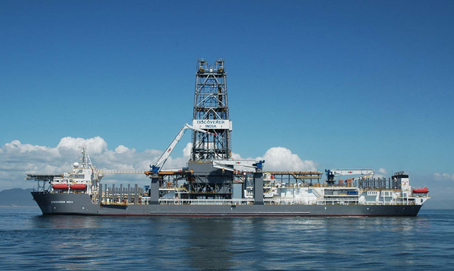
Chevron Corp.’s plan to lift output 20 percent in three years is on track, Chief Executive Officer John Watson said, despite an oil-price slump that bled $5 million a day from the company’s US oil and gas wells.
A 3 percent production increase and construction progress at two enormous gas-export projects in Australia demonstrate that Chevron will “deliver significant cash flow and production growth by 2017,” Watson said in a statement disclosing first-quarter results on Friday. Those results included a $460 million loss in Chevron’s US oil and gas unit.
Net income fell to $2.6 billion, or $1.37 a share, from $4.51 billion, or $2.36 a year earlier, the San Ramon, California-based company said in the statement.
The per-share result, excluding some one-time items, was 58 cents higher than the 79-cent average of 20 analysts’ estimates compiled.
Watson has slashed billions of dollars in spending, jettisoned lower-profit ventures and put oil and natural gas fields around the world on the auction block in response to the rout in energy markets. Share buybacks that absorbed $5 billion in cash last year were halted in January.
The second-largest U.S. oil company by market value capped a week of lower industry profit announcements. So-called supermajors such as Exxon Mobil Corp., Royal Dutch Shell Plc, Total SA and BP Plc all posted their worst quarterly results in years as the free-fall in energy markets eroded cash flows.
Chevron’s statement was released before the start of regular U.S. stock trading. The shares fell 0.6 percent to $111.06 in New York on Thursday. Chevron reported in January that its fourth-quarter net income fell to $3.47 billion, or $1.85 a share, from $4.93 billion, or $2.57, a year earlier.
Brent crude, the benchmark for most of the the oil traded outside the U.S., averaged about $55 a barrel during the first quarter, down from more than $107 a year earlier. In Chevron’s oil and gas business, output is 67 percent crude; the rest is natural gas.
Recommended for you
